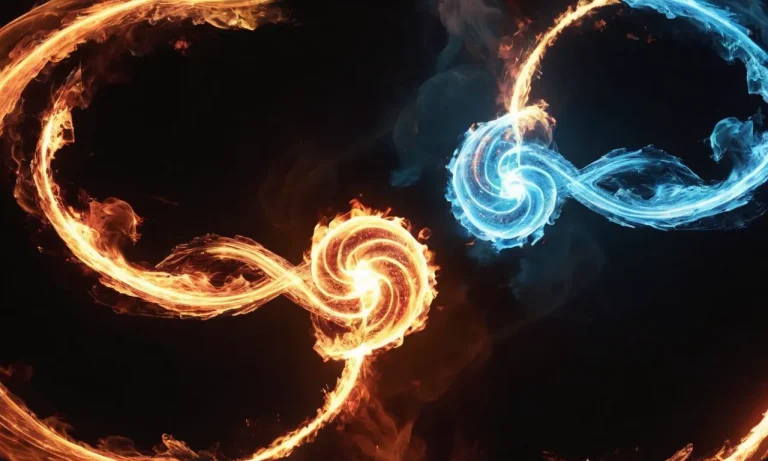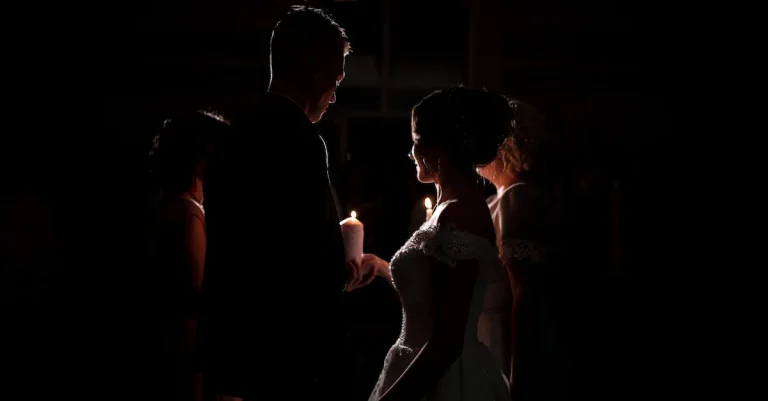The rumble and crack of thunder has inspired awe, fear, and fascination in humans across cultures and throughout history. But is there a deeper, spiritual meaning behind this powerful force of nature?
In short, thunder symbolizes the masculine energy of power, creativity, passion and spiritual awakening in many cultures and spiritual traditions.
In this in-depth article, we’ll explore the potent spiritual symbolism of thunder in detail, including its connections to gods, creation myths, the elements, emotions, rebirth and more in traditions ranging from Ancient Greek and Norse mythology to Buddhism, Hinduism, paganism and shamanism.
Thunder Gods and Goddesses
Zeus and Ancient Greek Mythology
In Greek mythology, Zeus was revered as the god of thunder. As legend has it, his thunderbolts allowed him to control the weather and inflict punishment against those who angered him. Ancient Greeks believed thunder occurred when Zeus hurled his thunderbolts from Mount Olympus.
Temples and statues were erected to venerate Zeus as a sky deity responsible for rain, weather, and fertility.
Thor in Norse Mythology
The Norse god Thor is prominently associated with thunder in Norse mythology. Thor was considered the protector god of both gods and humans against destructive forces. With his hammer Mjölnir, Thor was believed to produce lightning and thunder as he rode across the sky in his chariot.
The loud thunderclaps were attributed to the deafening sound of Thor striking his opponents and enemies with his hammer.
Indra in Hinduism
In Hindu traditions, Indra is a heroic god known for his thunderbolt weapon called Vajra. As per Hindu texts, it is the energy of Indra’s thunderbolt that produces rain, thunder and lightning. Indra has used the thunderbolt to defeat several adversaries during various battles between gods and demons.
Through his warrior traits and thunderous powers, Indra has conveyored thunder symbolism of spiritual strength in Hinduism.
Lei Gong and Dian Mu in Chinese Traditions
In Chinese mythology, Lei Gong, also known as Lei Shen, is the god of thunder while Dian Mu is the goddess of lightning and thunder. According to legends, Lei Gong uses hammers and chisels to produce thunder while Dian Mu uses her mirror to flash lightning.
Temples dedicated to Lei Gong and Dian Mu can be found across China, especially in the Sichuan and Jiangxi provinces, reflecting the deep-rooted Chinese belief in these thunder deities.
Across these ancient mythologies from different cultures, gods of thunder and lightning were revered and even feared for their awe-inspiring powers. They reflect the fundamental spirituality that various societies have attached to the intense natural phenomenon of thunder through history.
Thunder in Creation Myths and Cosmology
The Voice of Creation
In many ancient mythologies, the loud roar and rumble of thunder represents the powerful voice of the gods or deities. For example, in Norse mythology, the thunder god Thor uses his mighty hammer Mjölnir to create booming thunder whenever he strikes his anvil.
This connects thunder with creation, divine authority, and ability to forge order from chaos.
Similarly, in many Native American tales, the thunder beings represent the voices of creator spirits thunderbirds soaring through storm clouds and beating their wings. The Diné (Navajo) legends say claps of thunder echo the First World’s efforts at creation before humankind emerged.
So thunder signifies the primordial cosmic processes that shaped life.
Chaos and Order
As a loud and abrupt natural phenomenon, thunder evokes primal feelings of awe, fear, or chaos approaching. Ancient myths often portray thunder gods battling chaotic monsters and demons to establish divine order.
For instance, the Babylonian god Marduk defeats the ocean goddess Tiamat with thunderbolts to form the organized cosmos.
The unpredictable, potentially destructive fury of thunderstorms also connects them with chaotic forces of nature opposed to civilized stability. But from a Taoist viewpoint, this wildness allows vital energy qi to flow, preventing stagnation.
So Cosmic thunder signifies the complementarity of order and chaos in creation.
Weather Elements and Alchemy
In traditional astrology and alchemy, each planet corresponds to a different metal. Jupiter’s metal is tin, which rang when struck. This associated Jupiter’s rains and thunder with tin’s mystical sonic properties.
Likewise in medieval lore, thunderstorms result from vying elemental forces. The following table compares the 4 elements’ connections to weather and their affinities with planets and metals during storms:
| Element | Weather Process | Planet | Metal |
|---|---|---|---|
| Air | Wind gusts | Mercury | Quicksilver |
| Water | Rain floods | Moon | Silver |
| Fire | Lightning strikes | Mars | Iron |
| Earth | Thunder claps | Jupiter | Tin |
So in occult cosmologies, the dynamic interplay of the 4 elements, planets, and metals generates each explosive thunderstorm. Their noise signifies Earth’s rumbling relief as tensions between contrary forces are released.
Emotional and Symbolic Meanings
Power and Potency
The raging sound of thunder has long been associated with great power, masculine energy, and divine forces in many cultures and spiritual traditions. Ancient civilizations often linked the loud clap of thunder to the voices or actions of their sky gods – from the Greek god Zeus to the Hindu god Indra.
Even today, many spiritual seekers view thunder as a reminder of the potent primal energies that surround us. The sheer volume and vibration of thunder is seen as evidence of the raw power inherent in nature. Like lightning, thunder symbolizes the strength and vitality of life itself.
Spiritual Awakening
The sudden, jarring boom of thunder is viewed by some as a wakeup call – rousing us from spiritual slumber or complacency. This explains why many cultures associate thunder with spiritual revelation, insight, or awakening.
In Native American legend, thunder beings are seen as great teachers. The din of thunder overhead was believed to signify a message from the spirit world, imparting wisdom and clarity for those willing to listen. Many Eastern religions also link thunder to higher states of consciousness or awareness.
Catharsis and Transformation
The sheer drama and force of thunder and lightning evokes a feeling of emotional catharsis for many. Thunderstorms represent the buildup and explosive release of natural forces – reflecting inner turmoil give way to calm.
This is why thunder is often viewed as transformative – heralding a symbolic cleansing, rebirth, or transition.
Watching a thunderstorm can also prompt self-reflection, as we resonate with the intensity of the storm. Peals of thunder are seen as reminders to acknowledge and express our deepest feelings or desires – rather than bottling them up until they explode out of our control.
Omens and Divination
For centuries, people sought to decode the mysteries and messages hidden within the roar of thunder. Many cultures looked to thunder as an omen – interpreting the number, frequency or timing of thunderclaps as clues to divine the future.
Even today, some spiritualists use thunder divination to answer personal questions by listening for thunder echoes or counting the seconds between lightning and thunder. The superstition also persists that thunder erupting suddenly “out of the blue” sky may foreshadow unwanted surprises or storms still ahead.
Thunder Practices, Rituals and Imagery
Shamanic Journeying
In many ancient cultures, shamans used the rumbling sound of thunder to enter an altered state of consciousness for spiritual journeying. The thunder’s vibrational energy helped transport their minds to other realms where they could communicate with spirits or ancestors.
Common rituals involved meditating to thunderstorms or incorporating the symbolism of lightning into transcendent practices.
Pagan Thunder Magic
Some modern pagan traditions invoke thunder for magic spells and rituals. Believers attribute the thunder god Thor with purifying, protective powers that can be harnessed through incantations, prayers, or offerings.
Historical accounts described Norse warriors conjuring thunderstorms against enemies in battle with Thor’s mighty hammer Mjölnir.
The Thunderbolt in Buddhist Iconography
In Buddhism, the thunderbolt or vajra symbolizes enlightenment, clarity, and indestructibility. It appears prominently in Buddhist iconography as an attribute of deities and a ritual implement used in meditation.
The thunderbolt likely draws parallels to the sudden flash of insight reached during spiritual awakening.
Thunderstones in Folk Legends
Many cultures’ folklore describe thunderstones – naturally shaped stones believed to have been cast down during thunderstorms. People once widely regarded these as magical charms with healing or protective abilities.
Geologists now recognize thunderstones as prehistoric axe heads or fossils, but the folk legends still contribute to thunder’s aura of mysticism.
| Culture | Name for Thunderstones |
|---|---|
| Norse | Thor’s stones |
| English | Thunderbolts |
| German | Donnerkeile |
| French | Pierres de foudre |
Conclusion
So in summary, the symbolic and spiritual meanings behind thunder encompass masculine power, creation, destruction and rebirth, spiritual awakening, emotional catharsis and more across a rich tapestry of global traditions.
The awe-inspiring phenomenon of thunder reflects a potent natural energy that cultures around the world have attempted to understand and harness through myth, ritual and reverent spiritual practice.






